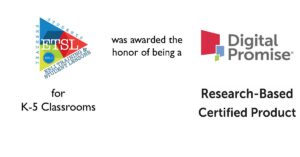How do we keep students ‘in the zone’ when they are learning?
Whether learners are being taught in-person or virtually, providing instruction or guidance that keeps students engaged and motivated is integral to their learning! This is a key factor for both teachers providing the instruction and parents providing support.
The number one factor for success is positive reinforcement. It is well documented that when a child (or adult) who is learning something new hears ‘no’, ‘that is wrong’, or other feedback that negates their effort, they typically shut down and their progress is halted. For optimal learning, it’s imperative to be encouraging and focus on the positive.
Positive feedback should be brief and immediate. When in group instruction, use student names. Catch students doing what you have asked them to do and then recognize them for it. Keep negative feedback to a bare minimum, if at all.
MOTIVATING AND ENGAGING STUDENTS
What does this look like in action?
I recently read an article (complete with pictures!) about teachers putting a sticker on their face every time a student raised their hand to participate in a Zoom lesson. This trend has caught on and teachers rave about how effective it is to raise student engagement. It sounds quite entertaining too! So teachers, stock up on stickers and try it out!
One of our favorite ‘positive behavior enhancers’ is the point game. It consists of a simple T chart with the student’s initials or, in group or whole class instruction, an ‘s’ for students and your initial on the other side. Be sure students know how they get points and how you get points. For example: “When you follow my directions, don’t move ahead, are paying attention, and aren’t talking to your neighbor, your team gets a point.” You can also include specifics of the instruction, such as: “If you remember a capital letter at the beginning of the sentence and punctuation at the end” or “If you sound out unknown words or ask me for assistance when you are reading.” Let them know that if they don’t do these things, then your team gets a point.
In sticking with the positive reinforcement, you are working to catch the student(s) doing what you have asked versus pointing out misbehavior. It is extra beneficial to use student names. Say to the class, “Everyone say thank you Jenna as she just got your team 5 points. She is so on task and is putting in tremendous effort.” The class says, “Thank you Jenna” then works to be so on task and puts in tremendous effort in hopes that they will be recognized for being deliberate learners. Become a chronic celebrator with calling out the students for their positive effort and achievements, big or small.
Specific instructional suggestions for motivation and engagement
We all have been on many, many Zoom calls, presentations, and courses. Some are engaging and some are, well….not. Think about those you found engaging and replicate what those presenters did to help you feel connected to the conversation or material.
Here are some suggestions that I have found to be worthwhile, whether teaching students, training teachers, or doing presentations. They work well for virtual and in-person instruction.
Watch the video at the top for examples of what these activities look like with students.
- Use whiteboards and have students hold them up at intervals
- This helps you be diagnostic and prescriptive in your instruction and holds students accountable for their work
- For students who are not participating, respectfully call on them and ask them to hold up their whiteboard
- Ask students to show you a thumbs up or thumbs down to answer a question or query
- Engage in multi-sensory instruction as much as possible
- Ask for 1 word answers
- Vocabulary Expansion game
- Avoid lecture
- Ask for a 10 word summary of the story, their day, an activity they did
- Scavenger hunt for a time limit, report back
- Give 30 seconds to write, then ask for shares
- Engage in I do, you do, we do
- Give them choices in what they want to learn
- Surveys to control the choices
- Being an active participant increases interest
Think about working smart instead of working hard! Trying to teach virtually in the traditional style makes it very hard for you the teacher and makes it difficult for students to stay engaged. Give yourself grace and permission to try novel approaches. Also give yourself permission to let go of approaches you know just will not work for you. I tried to teach EBLI lessons, content I could teach in my sleep, with the Zoom whiteboard and all kinds of bells and whistles. It was a disaster for me and for those I was trying to teach. That approach worked well for others, but not for me!
Remember that if the instruction is enriched, engaging, effective, and efficient, then simple is much more meaningful and beneficial for the students and for you!
What are your favorite strategies for motivating and engaging your student(s)? Share in the comments.





